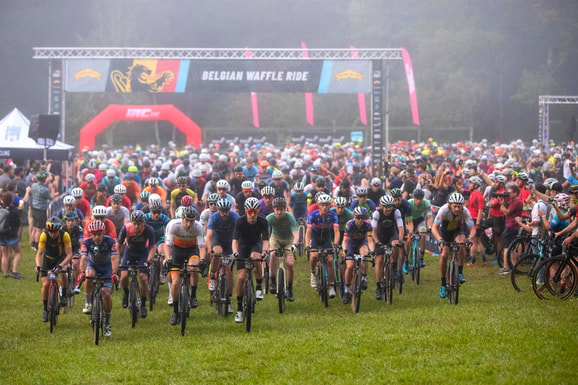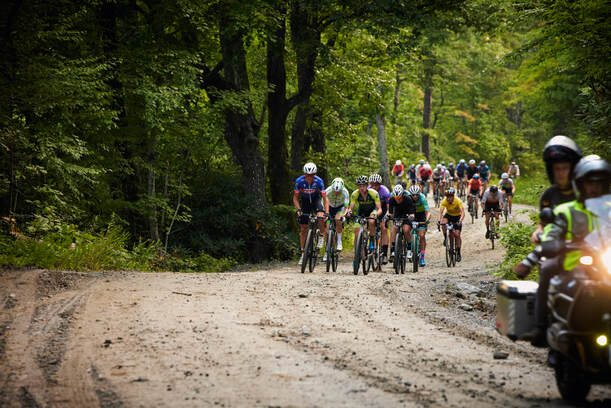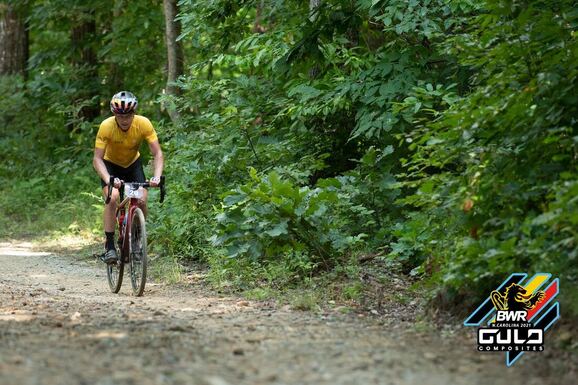|
You are not alone. Gravel racing has become one of the most popular cycling events in the country because it offers something for everyone. Gravel events have emerged as a way to offer riders of all skill and ability levels the opportunity to race off-road, in a more traffic-free environment without the need for an advanced mountain bike skill set. This idea birthed what is essentially a “mixed surface” version of fun, big road rides and fondo-style events. There are a variety of distances to choose from—15 miles to 100 or more. What Gravel races typically touch on two terrains: pavement and gravel. And occasionally some single track. It is normally mass start and fairly casual on the rules, with each race having it’s own variety of gravel roads. Thus, it is unique in that each and every person brings a different setup. They typically have provided feed/sag stations where you can pause and fuel up. Why This mixed-surface discipline has attracted the likes of World Tour pros, retirees, first time racers, and cross-discipline athletes. The emphasis on camaraderie, individuality, and the overall experience over the typical fight-for-every-spot attitude has driven people in the gravel direction. It offers flexibility and a chance to accomplish your own goals on any given day. Where The gravel side of racing is popping up left right and center across the states. While the Belgian Waffle Ride and Unbound events are the “pinnacle” of gravel, you can find them about anywhere now; everything from one-day events to multi-day stage racing! What to Expect Be ready for a wide variety of bikes, athletes, expectations, and levels of seriousness… Categories Most offer broad categories, everything from “open men” to age-specific categories can be found. Some have pro fields and some don’t, but generally they all start together – and that is rad. Pace Intentions are made clear pretty quickly – pros going for the big prize will typically set off to break the group up and thin things out. After that, you can assess your goals and expectations and find a pace. Most of the time, these events split up into many chunks. Be mindful of the route and demands to come, these are usually long days where rationing energy pays off. Strategy Again, this is up to the discretion of the athlete. Strategy will depend if you are there to “compete” or “complete”. Find your groove or group and be intentional about your plan for the day. Courses Every course varies. For example, BWR has a 130mi version in Utah with less than 8k vertical feet. Meanwhile the North Carolina edition is sub 100mi and 11,000 vertical feet. Not only that, the surfaces are WILDY different. You may be on hardpack dirt that you can run a road bike on while the next event has eroded and chunky roads you’ll be wishing for suspension. Similarities and differences The effort in a gravel race is most similar to a Gran Fondo event. Longer mileage than MTB races, more technical than road races, and an overall emphasis on durability. This is a perfect segway for how to come prepared… Training How to prepare for the variety of gravel… Foundation Most gravel races will have definitive features that separate the groups and/or allow the “cream to rise to the top”; ie significant climbs. However, some can be rolling and accumulate elevation over time. While those are very different, the demands are similar from a physiological perspective. You need a broad base of aerobic fitness with which to rely on. This “foundation” is crucial to one’s ability to handle the fatigue over time. Regardless if your race has three large climbs or 100 short ones, being able to spend more time in an aerobic (oxygen/mostly fat utilizing) state saves muscle glycogen. Match Demands With that being said, study your big goal’s demands and try to match or simulate those in training. If you are targeting Steamboat, for example, then you know it has two massive climbs. Spend time developing and extending your ability to ride at a higher aerobic pace (ie. Sweet Spot and Threshold work). Try pushing those 3 x 10s into 3 x 15, 2 x 20, 3 x 15, etc. If you are comfortable in that realm, and your event has more punchy features, dedicate some time to repeatability and/or intensity…so push that power up vs making it longer. Skills Gravel can be technical, despite what some may say. It is a loose, moving surface. So take time to get comfortable on your equipment riding on similar surfaces and (specifically) practice with your weight placement for cornering more effectively. Equipment Most courses I have experience with (or have seen) are conducive to a bit bigger tires than most expect. You may be able to get by with 32cc for example, but something in the range of 36-44cc is ideal. The bigger tire allows for lower pressure, suppleness, and comfort. Nutrition Fortunately, most of these events provide their own feed/sag stops for free food, refills, etc. Study the map and know where these are on the route, you can often carry less due to the amount of feeds. However, if you are specific with your fuel type, you may also be able to send things to these stops. Be prepared though, the weight of a hydration pack or extra bottle is negligible compared to bonking, running out of fluids, and suffering poor performance from that. These long races are often an eating contest, staying on top of fueling “early and often” pays dividends. As a rule of thumb, you want to keep anywhere from 40-90g of carbs coming on board per hour. Most elite athletes may be able to handle that upper end, due to training the gut, but the goal is to stave off your body from pulling out its muscle glycogen reserves. Practice: there isn’t much else to say here, if you don’t practice it, you won’t know if you can handle it. Develop an adequate and individualized plan to help your fuel your race. Most people need to spend time working on carbohydrate and fluid intake to know what they can handle…you have to train the gut, too! Final Notes
The gravel scene is expanding rapidly and the events pose an opportunity to try something new, test your fitness, and have one fun day on the bike around friends. They can often be fun on a whim, but if you want to come prepared and feeling like you are equipped with the fitness and mentality to handle them, having a coach or specific training plan can make all the difference. Having oversight on the day-to-day optimizes your time and energy to come to that start line ready.
0 Comments
Leave a Reply. |
AuthorCarson Beckett, 26 | Coach, Pro, and Co-Founder of Dirt Camp Racing | Carson Beckett Coaching CategoriesArchives
January 2024
|



 RSS Feed
RSS Feed